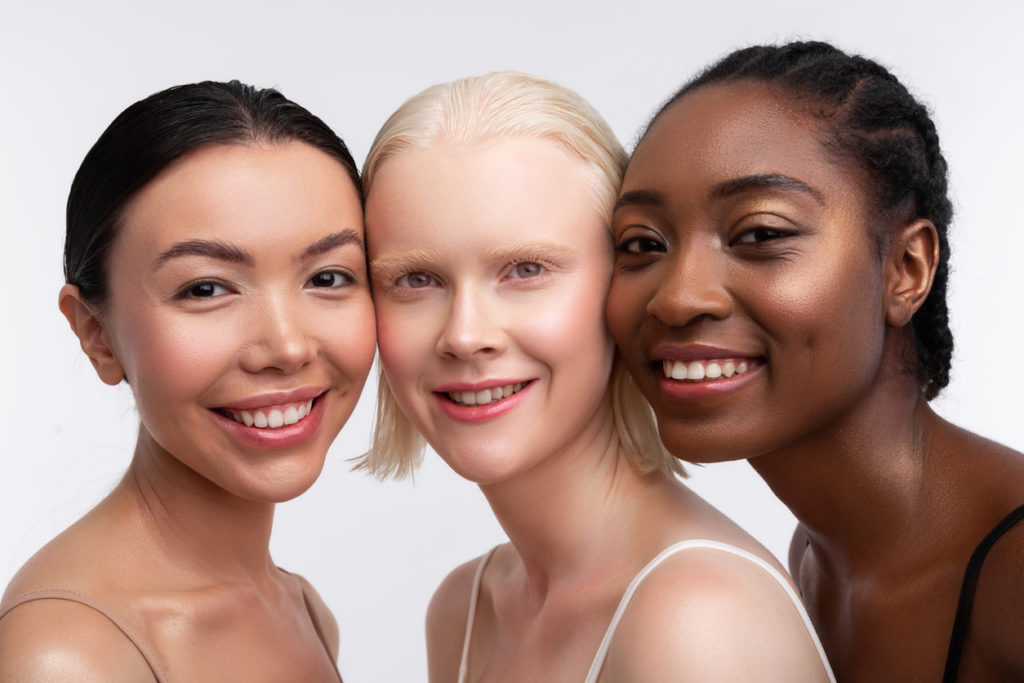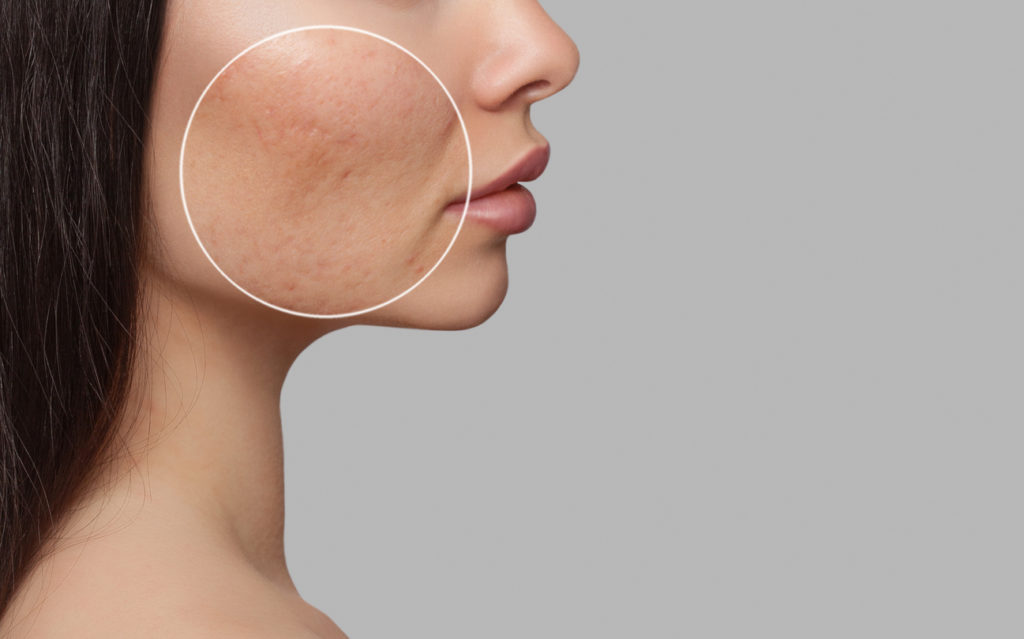How to Get Rid of Blackheads and Enlarged Pores, According to a Leading Dermatologist
Stubborn blackheads and large pores got you down? We have a slew of doctor-recommended remedies.
When it comes to annoying, yet innocuous skin woes, there’s something about blackheads and clogged or enlarged pores that take the cake. While they’re mercifully pain-free (unlike an inflamed pimple), those pesky, slightly raised dots that pop up around the T-zone and chin can feel like a barrier to the flawless, smooth skin of our dreams.

First off, let’s clarify one thing: Blackheads and sebaceous filaments (what many of us think of as “clogged pores”) are two different beasts, explains cosmetic dermatologist Natalie M. Curcio, MD, MPH. Here’s the difference between these two-pore complaints, as well as how to address them. (Consider your blackheads officially banished).
What are blackheads, and how do you treat and prevent them?
“Blackheads form when too much sebum, dead skin cells, and bacteria clog a pore,” says Dr. Curcio. “Dead skin cells and oils collect in the opening of the skin follicle, producing a bump commonly referred to as comedones. If the skin over the bump stays closed, the bump is called a whitehead (or an open comedo). When the skin over the bump opens, exposure to the air causes it to oxidize and turn black. Hence, a blackhead (or a closed comedo) forms.”
Some of the risk factors that predispose people to forming blackheads include producing too much oil, the buildup of the Propionibacterium acnes bacteria on the skin, and irritation of the hair follicles when dead skin cells don’t shed on a regular basis, according to Dr. Curcio.
Even if that sounds like you, all hope is not lost. First off, you know the golden rule of skincare: “Try not to pick, squeeze, rigorously exfoliate, or pop blackheads, as this can lead to scarring and hyperpigmentation,” warns Dr. Curcio. Instead, she advises turning to over-the-counter chemical exfoliants that help kill bacteria, dry excess oil, and force the skin to shed dead cells (the gunk).
One ingredient to look for to help remove blackheads is salicylic acid, a beta hydroxy acid that exfoliates, removes excess oil, and increases cell turnover, she says. One of her favorite products that rely on salicylic acid is SkinMedica’s AHA/BHA Exfoliating Cleanser, a gentle formula that contains a combination of alpha hydroxy acids - Lactic Acid, Glycolic Acid, Citric Acid, Malic Acid, and Salicylic Acid, along with jojoba to improve the appearance of pores and acne.
Speaking of which, glycolic acid is another superstar, thanks to its ability to exfoliate while helping the skin retain moisture. She prefers Topix 10% Glycolix Elite Treatment Pads over pore strips. These pads help slough away dead skin and pore-clogging impurities to reduce blackheads and large pores. Another exfoliating classic is benzoyl peroxide, she notes.

One of her favorite blackhead treatments are a combination of the SkinBetter Science AlphaRet Peel Pads, which contain “a triple acid formulation (lactic acid, glycolic acid, and salicylic acid) enhanced with a patented retinol such as SkinBetter Science AlphaRet Cream, to exfoliate the skin and remove dead skin cells, helping to prevent clogged pores and reduce blackheads, leaving the skin smooth and bright,” says Dr. Curcio.
On the topic of retinoids, if over-the-counter options don’t make a difference, your dermatologist can write you a prescription for a medical-grade topical retinoid. This vitamin A derivatives promote rapid turnover of skin cells, reduce oil production and decrease clogged pores.
Three often-used medications are tretinoin, adapalene, or tazarotene, and a less potent version of adapalene (Differin 0.1% gel) is available OTC now. These topical products are applied at bedtime and require you, no matter what your skin type, to be extra vigilant about sun protection during the day due to increased sun sensitivity.
For more instant results, your dermatologist or trained aesthetician can also use a round loop extractor to remove blackheads. (At home, I personally swear by the DERMAPORE Pore Extractor & Serum Infuser, which uses a spatula and a little bit of pressure to remove dirt, oil, and blackheads.) If all else fails, chemical peels and laser and light therapies can get rid of blackhead-causing dead skin cells and help decrease oil production and kill bacteria, respectively.
And, as they say, prevention is the best medicine. To keep blackheads at bay, Dr. Curcio recommends a solid skincare routine of twice-daily face washing with a cleanser that works for your skin (she loves the softening, dissolving micro-bubbles of DefenAge 1-Step Multi-Cleanse), using an exfoliating mask once or twice a week (DefenAge 2-Minute Reveal Masque is her go-to), cleaning pillowcases on a regular basis, using a non-comedogenic moisturizer, and avoiding touching your face.

How do you treat enlarged pores or sebaceous filaments?
The good news: those sandy-colored or light-gray pore dots are called sebaceous filaments, and they are a totally normal part of your skin. The not-so-good news: Because these threadlike filaments line the insides of pores to help move sebum from the sebaceous glands to the surface of your skin, explains Dr. Curcio, they shouldn’t be messed with.
Even if you do squeeze out sebum (which is not advised — though I’m very guilty of this tempting habit), Dr. Curcio reminds that they’ll just fill up again. That’s the best-case scenario, too: “Squeezing or picking at sebaceous filaments risks scarring and spreading any bacteria that may be in or around the pore to other parts of your face, causing a breakout,” she says.
While some people don’t even see them, people with oily skin or enlarged pores tend to have more visible sebaceous filaments, explains Dr. Curcio. Thankfully, there are some ways to help with this.
“A dermatologist or other skincare specialist can recommend certain procedures to help with enlarged pores, such as microneedling, microneedling with radiofrequency and laser treatments,” advises Dr. Curcio.
So, while blackheads and overly visible sebaceous filaments are annoying, they aren’t necessarily forever. With a combination of consistency, the right skincare ingredients and treatments, and some patience, you’ll be well on your way to the dot-free complexion you’ve been waiting for.
Loading...